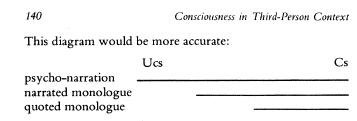Week 5
|
Week V Outline Charles Dickens, Great Expectations (first half, through page 244); Mikhail Bakhtin, from “Discourse in the Novel,” 259-331; Dorrit Cohn, summary handout and selection from Transparent Minds; DJO essays on Dickens’s magazine All the Year Round volumes 4 and 5; Research exercise 4: searching and skimming All the Year Round 1. Impressions of Dickens
“But the primary source of language usage in the comic novel is a highly specific treatment of “common language.” This “common language”—usually the average norm of spoken and written language for a given social group—is taken by the author precisely as the common view, as the verbal approach to people and things normal for a given sphere of society, as the going point of view and the going value.” (Bakhtin 301-302)
i. Comic novels as highly discursive entities ii. How does comedy function in Dickens?
i. “In Great Expectations, humor becomes part of the realist project” (Miriam).
ii. “Parody and humor are embraced into the realist floor-plan as tools that novelists have at their disposal to represent the world, with all of its contradictions and absurdities.” (Miriam)
i. Discussion of the parody, suspense, and comedy
“But I ran no further than the house door, for there I ran heard foremost into a party of soldiers with their muskets: one of whom held out a pair of handcuffs to me, saying “Here you are, look sharp, come on!” (30).
i. Criminality and class ii. Pip’s guilt (and the religiosity thereof) permeates the text
“like an unhooped cask upon a pole […] a gibbet with some chains hanging to it which had once held a pirate” (7)
i. The cows (17) ii. The horizon line (7) iii. Landscape (96)
iii. The Hunt
i. Hetereoglossia ii. Dialogism iii. “Between the word and its object, between the word and the speaking subject, there exists an elastic environment of other, alien words about the same object, the same theme, and this is an environment that is often difficult to penetrate” (Bakhtin 276).
“Thus as any given moment of its historical existence, language is a heteroglot from top to bottom: it represents the co-existence of socio-ideological contradictions between the present and the past, between differing epochs of the past […]” (Bakhtin 291)
“If prose is democracy, poetry is a monarchy” (Christina).
i. “If we attempt to read as D.A. Miller would have, we might conclude that humor is an insidious way of shaping opinions and attitudes” (Miriam).
i. Is humor a mask for something for something sinister?
i. “sulks” and “hulks” – social, experiential frame to language
“Hearing, in the childish world of Pip, means understanding—whether that means real words, cues, or gestures. Pip has not yet codified language. All noises motions and signs—whether real words or not—can reasonably be “heard” to mean something—though Pip is not quite sure what that meaning might be” (Danielle).
i. Dickens’s representations of Joe’s speech ii. Nearly every character’s speech represented through dialect…except Pip’s.
i. Chapter VII: Pip’s reflections on his reading practices
ii. Language based in socialization, education and class
i. How does FID function for Cohn?
i. What is the effect here? ii. The ambiguous boundary between author and character, as Cohn describes it.
i. We began with extensive/thematic approach ii. Movement into intensive
i. Looking at All the Year Round as a whole to better understand the serial ii. How does the serial form change the reading of the novel?
i. Characterizing Dickens’s presence as both an editorial figure and an author “… lending me, to copy at home, a large old English D which she [Biddy] had imitated from the heading of some newspaper, and which I supposed, until she told me what it was, to be a design for a buckle” (74).
i. Bakhtin & Price: The construction of heterotopic, multivocal, dialogic spaces
ii. How does context influence text?
i. Take a look at DJO in class Close reading of the title page of Dec. 1 1860
KEYWORDS:
Heteroglossia
Dialogism
Episteme
Common Language
Narrated Monologue (and other Cohn terms)
Intensive/ Extensive
[Additional Terms]
|


